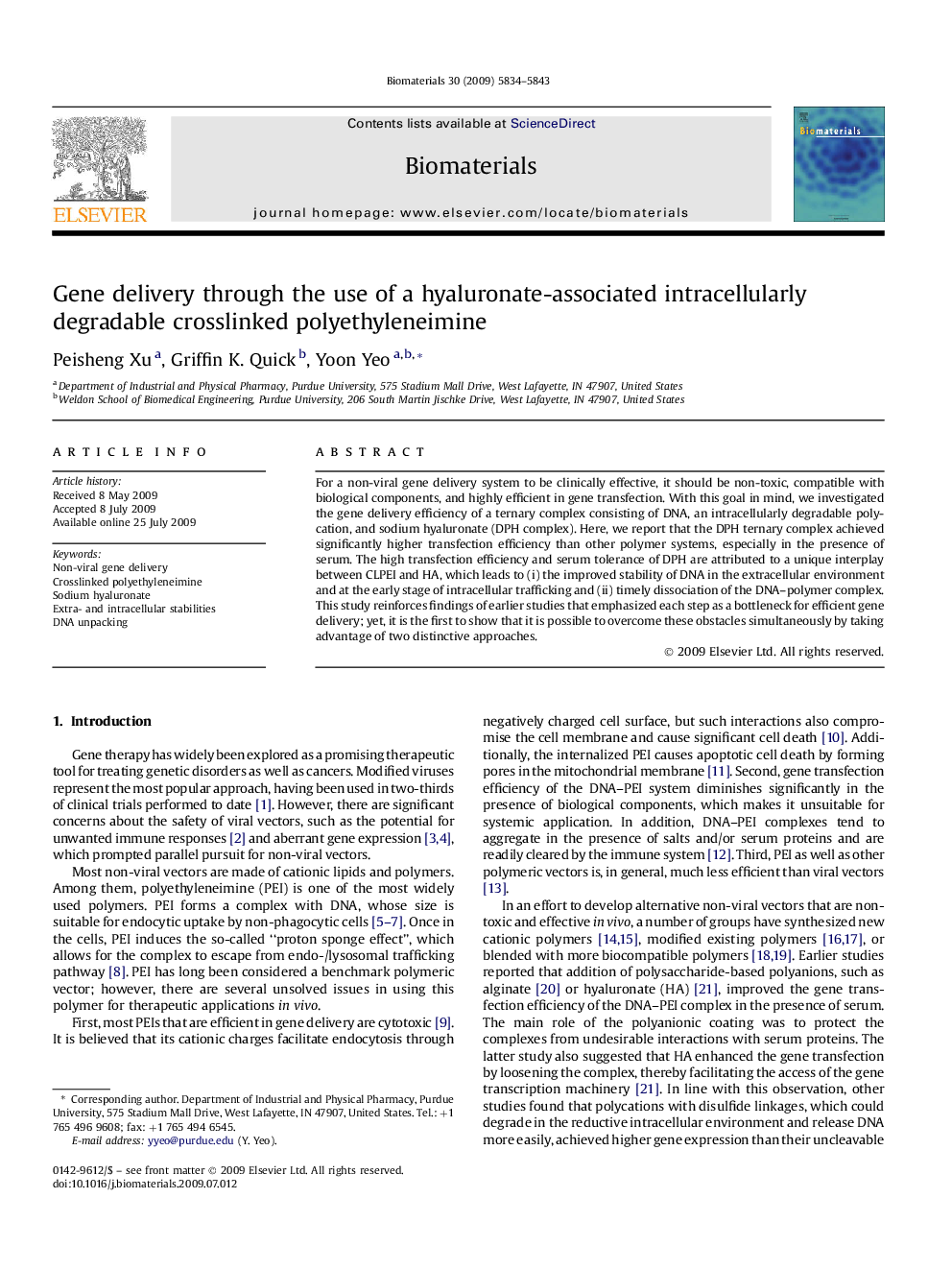| Article ID | Journal | Published Year | Pages | File Type |
|---|---|---|---|---|
| 8954 | Biomaterials | 2009 | 10 Pages |
For a non-viral gene delivery system to be clinically effective, it should be non-toxic, compatible with biological components, and highly efficient in gene transfection. With this goal in mind, we investigated the gene delivery efficiency of a ternary complex consisting of DNA, an intracellularly degradable polycation, and sodium hyaluronate (DPH complex). Here, we report that the DPH ternary complex achieved significantly higher transfection efficiency than other polymer systems, especially in the presence of serum. The high transfection efficiency and serum tolerance of DPH are attributed to a unique interplay between CLPEI and HA, which leads to (i) the improved stability of DNA in the extracellular environment and at the early stage of intracellular trafficking and (ii) timely dissociation of the DNA–polymer complex. This study reinforces findings of earlier studies that emphasized each step as a bottleneck for efficient gene delivery; yet, it is the first to show that it is possible to overcome these obstacles simultaneously by taking advantage of two distinctive approaches.
